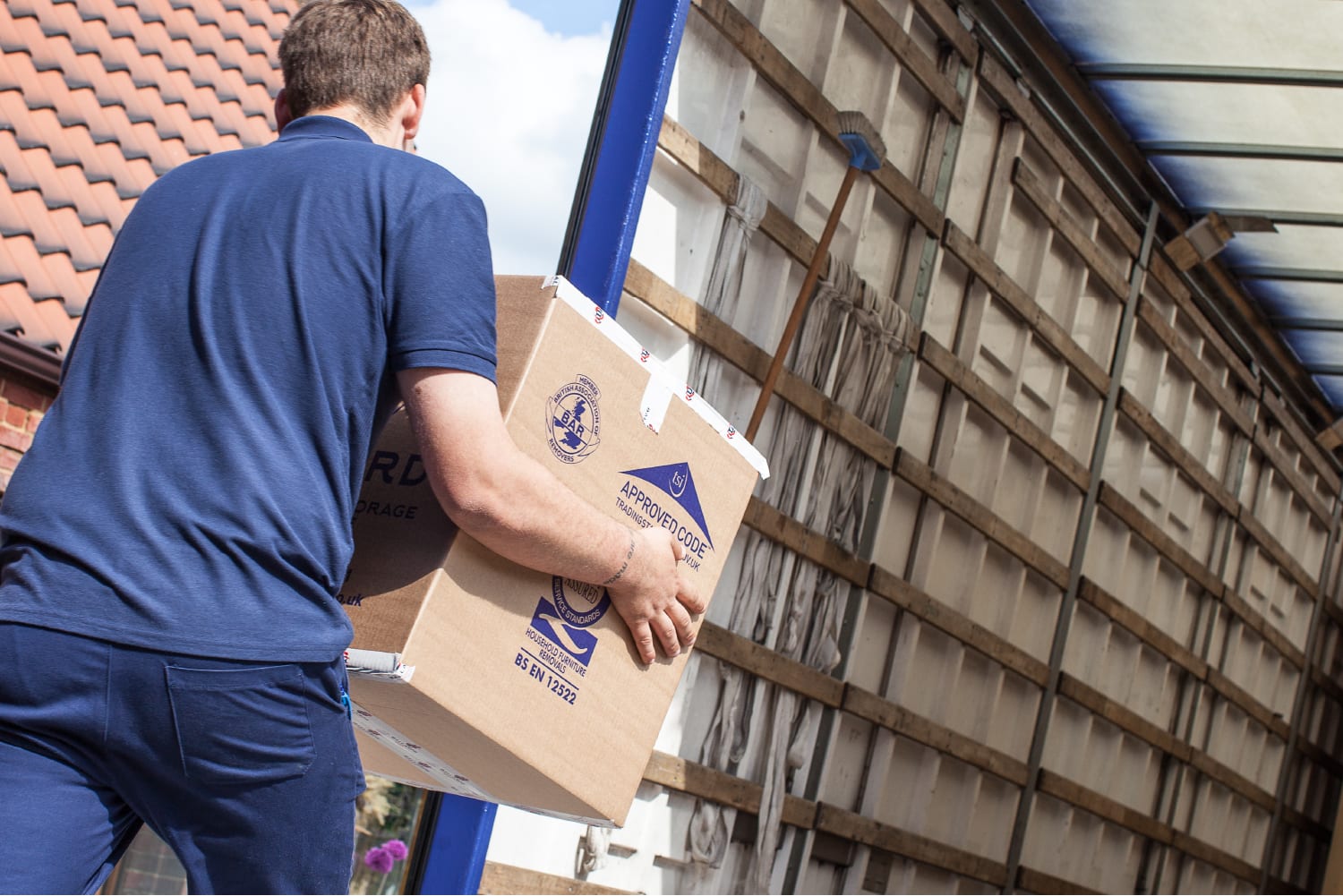If you’re planning on doing a DIY house move yourselves, then it’s likely that at some point, you’re going to need to lift heavy items such as beds, sofas and tables.
Lifting any item can be dangerous – especially if they’re on the heavy side. If you don’t follow the correct steps, you could end up causing yourself a nasty injury that may leave you out of action for several weeks (which is not ideal when moving house).
Obviously, the best bit of advice would be to hire a professional team of movers such as ourselves, but if that’s not an option, here are some tips on how to lift heavy items safely to prevent injuries and breakages.
Firstly, take a look at the item and surroundings
Just because a box doesn’t look overly big, it doesn’t mean it won’t be heavy or awkward to lift. The key first step is to check the load before you begin lifting, to make sure it’s actually something that you can physically lift on your own. If you begin to lift and realise it’s not achievable, that’s when you may drop the box, injure yourself or break items.
Make sure to also look at the best place on the item to lift from – find the best, most substantial thing to hold onto so that you won’t lose your grip throughout. If it’s a handle for example, it needs to be strong enough to bear the weight.
The object you’re lifting needs to be well balanced, as this will reduce the chances of you dropping it or even worse, injuring yourself. It’s important to consider that there may be some weak spots in the package (such as cardboard boxes, especially older ones) that you’ll need to be aware of.
Plan out the best route and then clear any obstacles that could be a trip hazard. Also, be mindful of any uneven ground, ramps or stairs too – as you likely won’t be able to see exactly what you’re walking on.
If you’ve followed these steps and are unsure, then please don’t try to lift the object without any help – it’s not worth the risk! By sharing a load with another person, it will be much safer, even if that person is just helping to direct you to where you need to be.
Check that you’re in the right position
In order to lift without causing any injury, you’ll need to be in a proper lifting stance. Start with your knees shoulder-width apart to help you keep your balance and remain steady.
Don’t forget to always keep your back straight, before tightening your abdominal muscles. Then, bend your knees and squat down towards the floor whilst looking straight ahead at all times. If you feel a bit unbalanced, you can put one knee on the floor and keep the other one bent at a right angle. Make sure to get a good, strong hold of the object (with both hands!) and prepare to lift.
Always keep the item as close to your body as you can, using your leg muscles to stand up and lift the item off the floor. Remember, ALWAYS keep your back as straight as possible throughout the whole process, or you could cause a significant injury to yourself.
Don’t twist your body when moving the item, as this again could cause a muscle strain. Use slow and smooth movements, making sure to take small steps and leading with your hips if you need to change direction at any point.
When you’ve reached where you need to be and you’re now ready to put the load back down, return to the squatting position, using leg muscles rather than your back. When you’re in the final moments of the lift, it’s very easy to become complacent and rush the final steps – but most injuries come from the final few actions, so stay focused!
Ensure that you keep your back straight and the item is close to your body, before then setting it down gently as you reach the ground or another surface, such as a table or worktop.
Most back injuries when lifting can be prevented
Most back injuries when undertaking heavy lifting can be easily prevented with the right precautions and techniques. The majority of these injuries are caused by:
- Using an improper lifting technique – always keep your back straight throughout and bend your knees
- Holding a heavy object for too long – put it down as soon as you can (but don’t rush!)
- Previous back injuries that are not fully healed
- Lifting a weight that is just too heavy for you – this will depend on your weight, height, sex, age and other factors. Always check first.
- Twisting your upper body whilst holding the weight
Here’s a quick summary of our advice
- Do not try to lift any overly-heavy items – share the load with someone else
- Never try to lift an object that is above shoulder level, as you could do some serious damage
- Never lift an object off the ground with straight legs, always bend
- Don’t try to lift an item by bending over – many back injuries are caused this way
- Stretching your body thoroughly before any lifting will help to prevent muscle pulls
- Use gloves to help with your grip, and to reduce hand injuries
- A back belt can help, but doesn’t always guarantee protection
- If pushing or pulling an object, try to reduce the amount of friction first
Lifting and carrying heavy items is one of the most high-risk parts of moving house, and is something that people often overlook and don’t properly research. If you’re planning a move, please be careful of lifting and be sure to follow our important safety tips. Remember, there is NO shame in asking for some help! Rope in some friends and family members to lighten your load or hire a professional mover
If all of this sounds a bit daunting, then Steeles is here to help. Our professional house removals team can do all of the hard work for you, with our years of knowledge and experience.
Click here for more information and to contact us for a free, no obligation quote.

